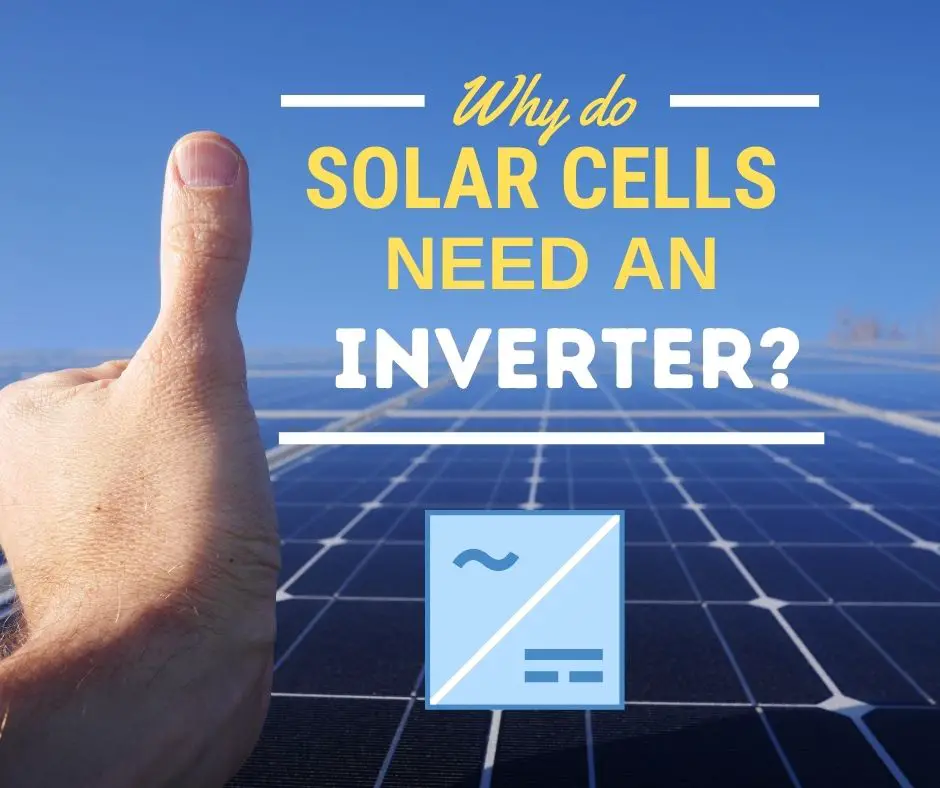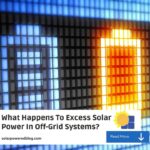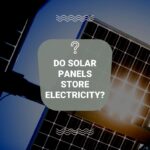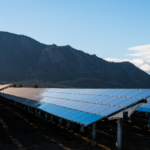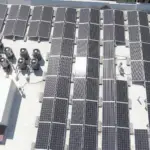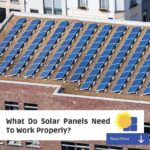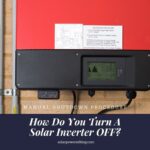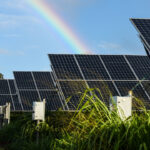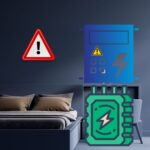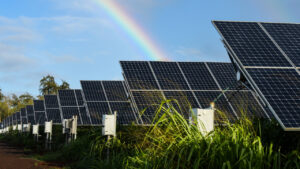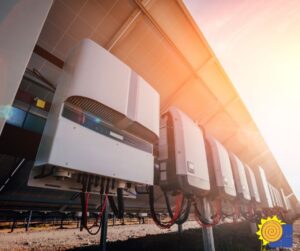Solar cells require an inverter because their DC output needs to be transformed into AC. The main reason for this is that most of our home appliances need electricity in AC form to function correctly.
So, the inverter does the conversion job. It receives DC electrical energy from solar cells. Then, the inverter uses various electrical and electronic components to make the DC input oscillate at a frequency of 50 or 60 Hertz. The inverter’s output is an electrical current with a sinusoidal waveform called AC. When the solar cell’s DC electricity transforms into AC, our home devices can then use it to operate appropriately.
If you want to learn more about this topic, stick with me as I explain more details in this article. Let’s go!
What Is A Solar Cell?

A solar cell is a square or rectangular-shaped device that can convert light energy from the sun into electrical energy. This energy generation process would take place via the photovoltaic effect.
A solar cell is a p-n junction diode in its simplest form, with electrical characteristics that vary with exposure to sunlight. Solar cells are photovoltaic or PV cells that operate in photovoltaic effect to produce DC electricity. When these cells are combined, they form a solar module.
An individual solar cell will only be able to create a small amount of current. A single solar cell will only be able to produce an open-circuit voltage of around 0.5 Volts DC.
Hence, when you combine multiple solar cells in one orientation and plane, you create modules. They can also be called solar panels. When individual solar cells are combined to create a panel, we can harness a considerable amount of solar energy.
Why Do Solar Cells Produce DC Only?
When the sunlight hits the surface of a solar cell, it stimulates the electrons to flow, which creates the current. Now, these electrons will flow in one direction only.
The unidirectional electron flow produces the DC or direct current. Therefore, a solar cell can generate DC electricity only and not AC. Otherwise, there will no longer be a need for an inverter in this case.
In contrast to any AC source, wherein electrons flow back and forth in a cycle, a solar cell’s electricity flows in one direction only.
Why Is AC Used In Our Homes And Not DC?

There are two primary reasons why we use AC in our homes instead of DC. Because of these, we can’t directly utilize the DC output of the solar cells and solar panels. They are the following:
- Most of our household outlets and appliances use the alternating current.
- The electricity from the utility grid is also in the form of AC.
#1 Household Outlets and Appliances Use AC, not DC.
Direct current electricity isn’t something that we can directly use for powering up most of our home devices. This is the main reason why we need to use an inverter to benefit from solar energy.
During the day, solar energy can power our homes with the help of inverters. An inverter can convert DC voltage and power into AC, which will enable us to use our home appliances. In the case of an on-grid solar power system, when the solar energy is more than the energy requirement of our household, excess electricity will be exported to the grid.
Additionally, we have 2 major solar PV system setups. If you want to know more about these two, you may read my previous article about the differences between on-grid and off-grid systems.
#2 Power Distribution Grid Uses AC, not DC.
Unless you are going off the grid, you will need to get power from the utility grid to use your home appliances. The way they transmit electrical energy from their power plants is through the transmission and distribution lines. These lines utilize high voltage and low current AC power to minimize electrical losses.
So, your solar panel system needs to adjust to your home’s power requirement, which is in AC form. When you go for an on-grid solar system connection, you also need to synchronize its output power to the grid. Now, this also another reason why solar cells and solar panels need an inverter.
What Are Inverters And How Do They Work?
Some of the household devices are powered by DC electricity. For example, you can use DC to power up your laptop or mobile phone. However, many appliances that you have at home are powered with alternating current or AC. Furthermore, learning how to switch on and to switch off an inverter will also be helpful for you.
The power sources in our homes are in AC form which operates in standard frequencies, either 50Hz or 60Hz. Here, the electricity is switching its direction 50 and 60 times in a given second, respectively. This form of electricity is what the majority of our home appliances need in order to function.
An inverter’s main role is to transform direct current (DC) into alternating current (AC). So, if you want to use solar energy to power your home, you need to convert the solar panel‘s output to AC. This is where the functionality of inverters comes in handy. Interestingly, you may consider the inverter to be the “bridge” between the solar cells and our appliances.
Can Solar Panels Work Without an Inverter?
Can you use solar panels without needing a device to convert its output into alternating current? Home appliances use electricity to work, and their electrical power requirement can be in the form of AC (alternating current) or DC (direct current).
If you choose to use solar energy for home appliances that require DC power only, you can skip the inverter part for your solar PV system.
Solar panels only produce the latter form of electricity, which is DC. So if you have DC-powered television, light bulbs, air-conditioner, and other appliances, your solar panels will still work even without an inverter. They commonly operate in DC voltage levels at:
- 12 Volts
- 24 Volts
- 48 Volts
Instead of using an inverter, you can connect your solar panels directly to a charge controller or a DC-to-DC converter that will produce 12V, 24V, or 48V DC as its output. This is what we call an off-grid setup.
Final Thoughts: Why Do Solar Cells Need An Inverter?

So, imagine this. From the sun’s solar energy, it transforms into DC electrical energy within solar cells. With the tiny solar cells connected together, the DC electricity increase in capacity as it gives out the solar panel output capacity. Solar panels joined in series or parallel in an array reach a significant amount of DC electrical energy, which the inverter will receive as an input. The inverter will then transform it from DC into AC.
That is how solar cells and inverters work to power our household devices that require alternating current. It answers why solar cells need an inverter.
We also learned that although solar cells need an inverter to power AC home appliances, it is not always the case. Not all the time, an inverter is necessary. When you only want to use solar energy to operate DC devices, you need a charge controller or charge regulator.
Understanding how solar cells and inverters work together allows us to appreciate the beauty of solar energy. As renewable energy technology advances, we could just anticipate a better and more sustainable future.
If you want to learn more about solar power and other renewable energy sources, sign up to our email list now and be part of the Solar Powered Fam!
